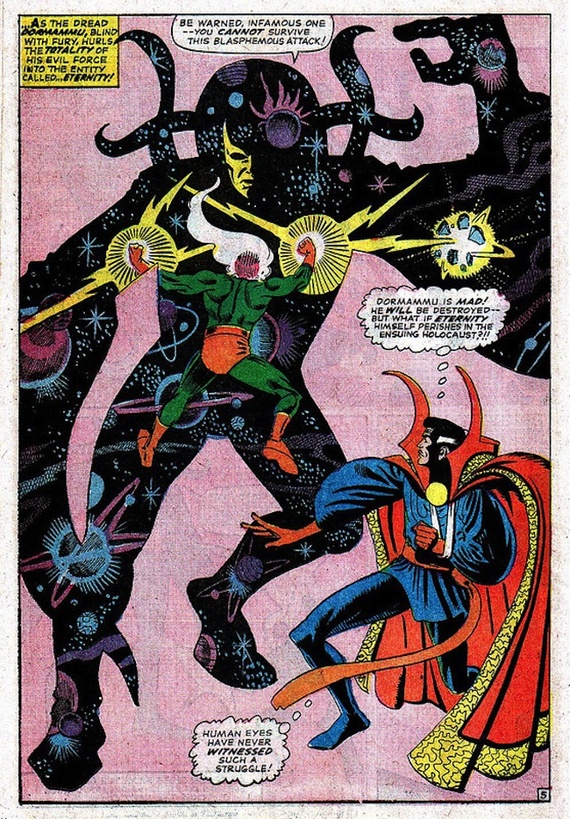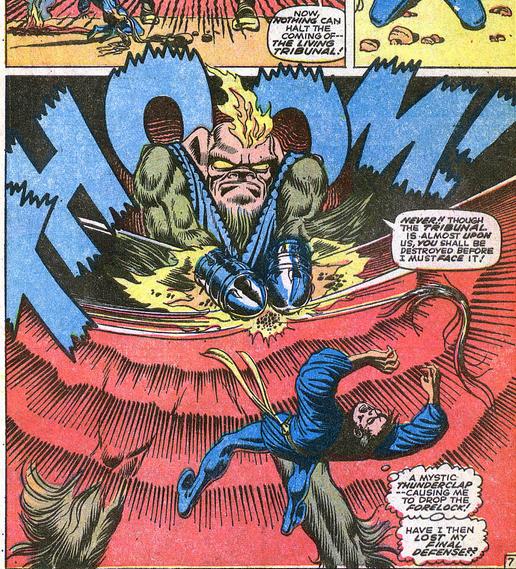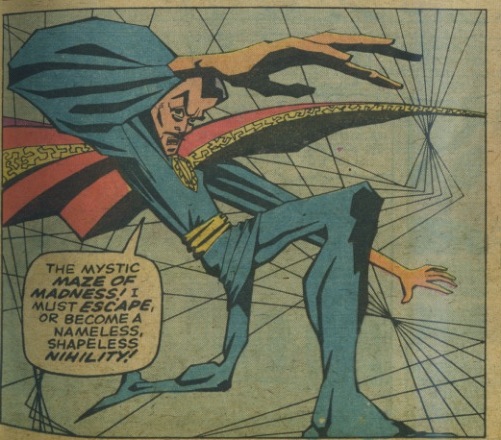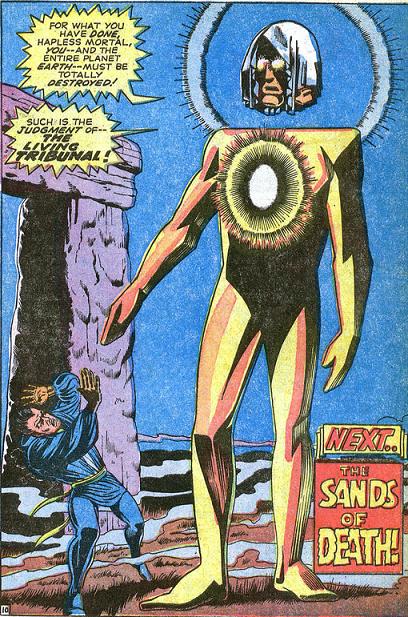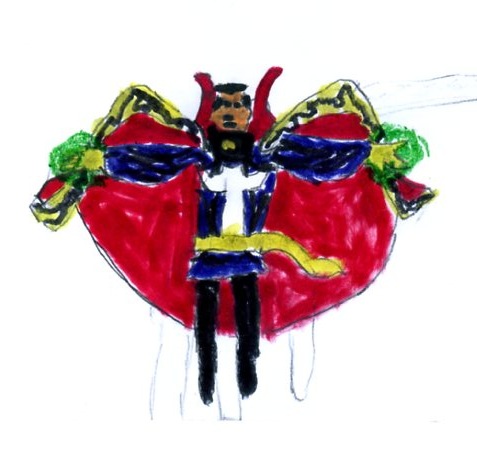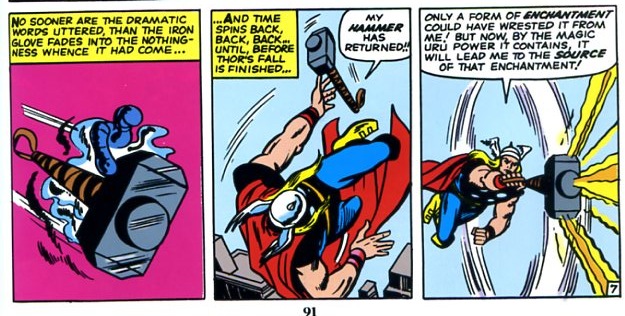Steve Ditko’s art for Dr. Strange was perhaps my favorite of all of early Marvel art, and some of my favorite comics art, period. Elegantly twisted combatants posed against patterned surreal landscapes, the sublime and the absurd slid together in bombastically perfected patterns.
Ditko’s work was inimitable — and yet, later Marvel artists worked to imitate him. In particular, Marie Severin drew a number of issues of Dr. Strange in 1967. I only have one of them; #157, scripted by Stan Lee, and featuring, like the title says, the death of the Ancient One(!)
As you can see here, Severin is fairly deliberately working to copy Ditko’s style. Dr. Strange and The Ancient One have their hands bent into eloquently elaborated gestures; the mystical background is represented by weaving patterns of force. Through an effusion of mystic might, she has made it appear that the mighty mystic…remains!
Sort of. In fact, the Ditko influence hangs a little oddly. Those gesturing hands, for instance; they’re certainly twisted in Ditko fashion, but the twisting ends up being too realistic. The clutching here seems expressive of pain, rather than expressive of a world where everyone’s hands are trying to soberly communicate words of mystic significance in an eldritch language. The fact that the baddie has giant mace-like thingamabobs instead of hands is telling too; would Ditko ever have covered his most precious instrument that way? It’s like Severin is trying to cut her losses — she only has time to draw so many of those damn hands!
If Stan Lee were smart, he would have written in the bubbles, “What kind of Ditko monster do you think I am? Fingers, damn it! I want fingers!”
The background swishes also advertise their not-quite-Ditko-ness. Ditko’s swirls tended to be solid; they emphasized the surface of the page, perhaps, but in the way a paint swath emphasizes a surface.
Severin, though, actually draws lines as lines. It’s as if she started to imitate Ditko, and then stopped, leaving the schematic evidence of not being the right guy behind her.
The sense that we’re seeing not only an imitation of Ditko, but a self-consciously incomplete imitation of Ditko, is even stronger in this panel, which I think is the best in the issue.
Again, the background is rendered not through mystic shapes arranged as design, but simply through an actual geometric doodle of lines. The Ditko pose is similarly rendered as a reductio ad absurdum of a Ditko pose, Strange’s body dramatically distorted, as if the effort to reach Ditko levels of posture has caused Severin’s drawing fingers to short-circuit. And, of course, Ditko’s digits are the most overheated, contorted bit of all, the gesturing appendage absurdly extended, the fingers a grotesque mockery of a hand. Meanwhile, Stan Lee burbles away in the caption. “I must escape or become a nameless, shapeless, nihility!” Is that Doc Strange struggling there? Or is it Severin, trapped in a factory system where she’s supposed to grind out product in someone else’s image, twisting and distorting herself into someone else’s shape and name?
None of this is to say that Severin’s art is bad. On the contrary, it’s great — arguably even in some ways better than that of Ditko himself. The sense of strain, the distance between the Ditko we should be looking at and the not-quite Ditko we see, gives the issue a clumsy charm, and even a poignancy, that is almost truer to Ditko’s spirit than Ditko himself. In the issue, the Ancient One, Dr. Strange’s master, is killed, and his death allows him to channel his mystic energy into his disciple. It feels like something similar has happened for Severin; though the Ancient Ditko is lost, his spirit gestures on — more mighty even than before.
The final (splash) page of the story nicely summarizes the issues pleasures. Strange is off to the side, his body twisted in on itself, his fat-fingered hands raised — he seems to be looking at them, or at the Living Monolith’s equally blocky fingers, as if horrified to realize that somehow, someway, he’s stumbled into the wrong comics page, where Ditko does not reign. The Monolith itself is distinguished by being not all there; it’s head floats a bit above its body — so the limbs are controlled by some disconnected, distant brain. It’s wrong and clumsy and lumpy in a way Ditko rarely was — which seems right, since Ditko isn’t here. And yet he is, in that space between preposterous head and preposterous body, or in the awkward way our hero seems to have temporarily lost control of his limbs. Ditko’s the pattern that’s gone, or, if you preferthe master who’s dead, leaving behind a gift not of power, but of wrongness; the beauty of the bits that don’t fit together, and so make something strange.
____
This post is something of a bookend to this piece on the Dr. Strange movie, fwiw.

